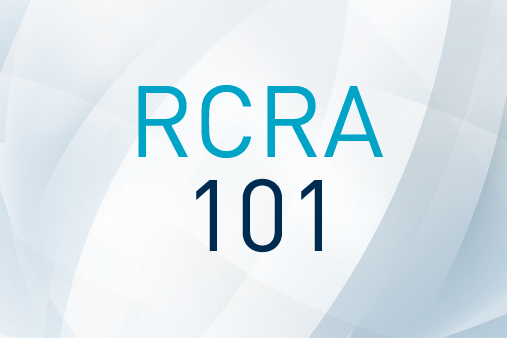Once an understanding of defining Solid and Hazardous Waste’s has been obtained the next step of properly managing waste is to characterize the waste and determine if it is in – fact a hazardous waste. This process seems difficult, but practice and having a system that can be applied to every waste can help. We are going to go over the general process of characterizing waste to determine if it is hazardous. In later articles the waste codes will be covered in more detail.
The process of characterizing your waste occurs when it is deemed waste and is being “abandoned”. The RCRA regulations clearly define what is and is not a hazardous waste. There is a hierarchy associated with waste characterization as outlined below. The first step is to determine if the waste is a “listed waste” – which are chemical or process driven and then next to see if the waste is a “characteristic waste” which is property driven.
The first step in characterization is to see if the waste is on the Discarded Commercial Chemical products, Off-specification chemicals, spill residues, and containers residue lists more often referred to as the P and U lists (40 CFR 261.33). These lists list the specific chemical with CAS number. If your material – typically a chemical – appears on this list, it could possibly contain the associated P or U code. If the chemical appears on the list you need to determine it is pure, unused, a spill residue, a container residue, or the sole active ingredient of a commercial product. If the waste fits one of those categories, then the specific P or U code applies. If none of these apply neither does the P or U code.
After you determine if a P or U code applies, next we want to look at the Waste from Specific Sources list, better known as the K-List (40 CFR 261.32). As opposed to being Chemicals that may be a P or U listed waste, these wastes are the result of specific manufacturing processes and are only generated by specific industries (by SIC Code) using specific chemical processes to manufacture specific types of chemicals. If your industry does not fall into one of the specific industries or manufacturing processes covered in the K-list these codes do not apply.
After the P and U, and K-list we move onto the Waste from non-specific sources list, better known as the F-list (40 CFR 261.31). These are wastes that come from more common industrial or manufacturing processes.
Now that we have gone through all of the listed codes the last set of codes we need to be concerned about when characterizing our waste are the Characteristic codes. These are better known as D- Codes (40 CFR 261.21 thru 261.24) and describe wastes that are proven to be ignitable, corrosive, reactive or toxic through chemical analysis and/or physical characteristics or generator knowledge. If the waste meets the definitions of D001 thru D003 each applicable code applies and if the TCLP results above the regulatory limits in D004 thru D043 those codes will apply.
Once the waste has been checked against all the listed and characteristic codes all applicable codes should be assigned to the waste. In many cases, multiple waste codes may apply, including a combination of listed and characteristic codes. If no codes were required to be applied the waste is considered to be Non-RCRA regulated waste or Industrial/special waste. If one or more are applied you have a RCRA regulated waste and therefore a Hazardous Waste. At this point it determines how the waste needs to be stored, handled, and disposed of.

